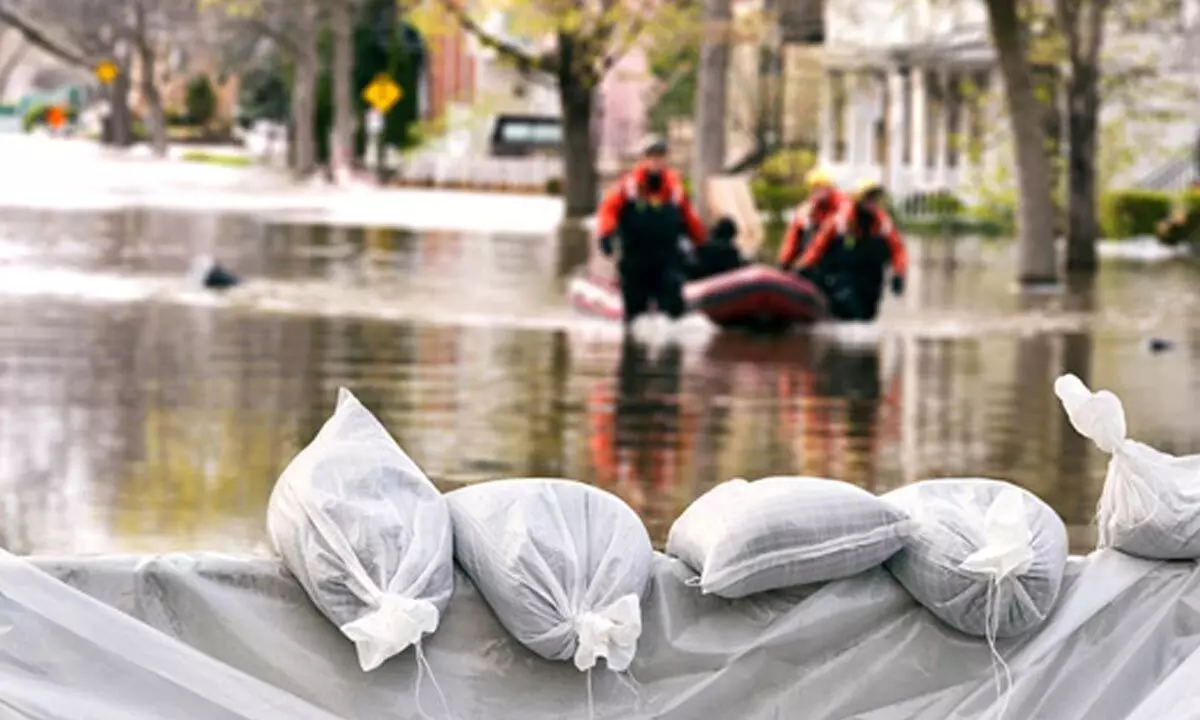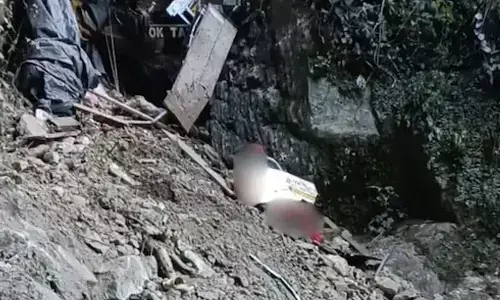Whither flood mitigation systems?

Representational image
According to the National Disaster Management Authority, around 40 million hectares of land in India (around 12% of the total land area) is prone to floods.
According to the National Disaster Management Authority, around 40 million hectares of land in India (around 12% of the total land area) is prone to floods. Unplanned urbanisation, changing demographics, socio-economic conditions, environmental degradation and climate change are bound to impact flooding a lot in the country. The last mentioned, climate change, has already advanced our monsoons decisively as is being witnessed.
Governments are now waking up to the threat of climate change and the irrigation plans are being rewritten. What happened to Mumbai on July 26 of 2005 is a stark reminder to us about the hazards of unplanned development and corruption. Flooding occurs when a huge volume of water is carried by rivers and their subsidiaries into areas where it gets stalled. We have woefully inadequate drainage systems in our cities and whatever exists, they too get clogged by hazardous material often. This only leads to further aggravation of the situation that leads to the dirty water getting kicked back into our homes and streets leading to health hazards and untold misery.
It is well known that 80 percent of precipitation takes place during the monsoon months regularly between June and September. The rivers bring heavy sediment load from the catchments. These, coupled with inadequate carrying capacity of the rivers are responsible for causing floods, drainage congestion and erosion of river-banks. Floods cause extremely large numbers of fatalities in every country, but due to India's high population density and often under-enforced development standards, many deaths, which could be otherwise avoided, are allowed to happen. If the Mumbai floods of 2005 saw nearly 1,500 perish, this year the Assam floods saw more than 200 dying. In other cities which had been inundated and people suffered for days together, it is just a matter of news for us.
Once the floods are over - sometimes even during floods - our channels and newspapers are filled with more political news. Loss of life and the related tragedies don't get our attention much. The basin of the Himalayan rivers covers a part of Punjab, Haryana, Himachal Pradesh, Delhi, Rajasthan, Uttar Pradesh, Bihar and West Bengal. Kosi and Damodar are the main rivers causing floods. The North-Western river basin covers the states of Jammu and Kashmir, parts of Punjab, Haryana, Western Uttar Pradesh and Himachal Pradesh. Jhelum, Sutlej, and Beas, Ravi and Chenab are the rivers causing floods in this region. The Central and Peninsular river basins covering Madhya Pradesh, Odisha, Andhra Pradesh and Maharashtra contain Narmada, Tapi, Chambal and Mahanadi. Heavy floods occur in Godavari, Krishna, Pennar and Cauvery at long intervals and flood problems are generally serious.
Construction of embankments, flood walls and ring bunds, flood control reservoirs, watershed management, Improvement of surface drainage, Improvement of river channel, construction of raised platform to be used during times of flood emergency and afforestation are just few of the solutions. Yet we don't plan. When our governments claim they have spent crores of rupees on mitigation plans, there is always little to see on the ground. Like drought, floods are also good business. Pity!



















